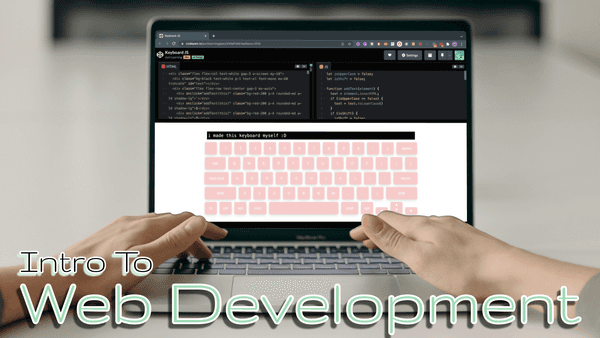Java Level 3: Advanced Java
Introduce them to college-level programming courses with an emphasis on the technical aspect of computer science (the skills sought after in technical interviews!). This course focuses on software development, program design, model creation, documentation, and debugging.

- Private 1:1
- Format
- Age 14-18
- Learners
- Weekly
- Classes
- 50 minutes
- Per class

About this Course
Java Level 3 is our culimating Java course. Students explore search and sorting algorithms along with basic data structures. At the end of the course, students work alongside their personalized instructor to build an app similar to Google Maps. After this course, students often advance to our AP CS or USACO courses.
Billing
Billed as
$275 / month
Scheduling
1:1 classes are 50 minutes long and can be scheduled anytime Monday-Sunday from 7am to 7pm PT. To begin, select Book your Placement Class to signup. Our team will then match you and set up your first class!
- Course duration4-6 months
- Lesson50 minutes
Learning Targets
Recursion
Recursion-1: I know what a recursive function is and its two key components
Recursion-2: I can write a basic recursive function in Java
Recursion-3: I can write more complex recursive functions involving multiple self calls in Java
Recursion-4: I can predict the outcome of a recursive function
Time
Time-1: I know what Big-O analysis is
Time-2: I am able to identify the time complexity of a function
Time-3: I understand the difference between the best-case and worst-case scenario of an algorithm
Time-4: I am able to identify the time complexity of an algorithm with loops
Time-5: I am able to identify the time complexity of a recursive function
Linear Search
Linear-1: I understand and can explain the process by which the linear search algorithm searches for a piece of data
Linear-2: I can implement a Linear Search algorithm in Java
Linear-3: I know the time complexity of Linear Search
Binary Search
Binary-1: I understand and can explain the process by which the Binary Search algorithm searches for a piece of data
Binary-2: I can implement a Binary Search algorithm in Java
Binary-3: I know the time complexity of Binary Search
Selection Sort
Selection-1: I understand and can explain the process by which the Selection Sort algorithm sorts data
Selection-2: I can implement a Selection Sort method in Java
Selection-3: I know the time complexity of Selection Sort
Selection-4: I know the difference between in-place and out-of-place algorithms
Insertion Sort
Insertion-1: I understand and can explain the process by which the Insertion Sort algorithm sorts data
Insertion-2: I can implement an Insertion Sort method in Java
Insertion-3: I know the time complexity of Insertion Sort
Insertion-4: I can explain the key differences between insertion and selection sort
Bubble Sort
Bubble-1: I understand and can explain the process by which the Bubble Sort algorithm sorts data
Bubble-2: I can implement a Bubble Sort method in Java
Bubble-3: I know the time complexity of Bubble Sort and how it’s performance compares to other sorting algorithms
Merge Sort
Merge-1: I understand and can explain the process by which the Merge Sort algorithm sorts data
Merge-2: I can implement a Merge Sort method in Java
Merge-3: I know the time complexity of Merge Sort and how it’s performance compares to other sorting algorithms
Sustainable Programming
Sustainable-1: I know what a nested class is
Sustainable-2: I know the difference between an inner class and a static nested class
Sustainable-3: I can write a simple nested class in Java
Sustainable-4: I understand what generics are and when to use them
Sustainable-5: I can write a generic class in Java
Sustainable-6: I know what exceptions are and why they’re useful
Sustainable-7: I understand the basic format of a “throw” statement in Java
Sustainable-8: I understand the basic format of a try-catch block in Java
Sustainable-9: I can handle exceptions in meaningful ways
Linked List
LinkedList-1: I know what a linked list is
LinkedList-2: I can implement the inner node class for a singly linked list in Java
LinkedList-3: I can implement the basic functionality of a linked list in Java
LinkedList-4: I know what a doubly-linked list is
LinkedList-5: I can implement the inner node class for a doubly linked list in Java
LinkedList-6: I can implement the basic functionality of a doubly linked list in Java
Stacks
Stacks-1: I know what a stack is
Stacks-2: I know how to push to a stack in Java
Stacks-3: I know how to pop from a stack in Java
Stacks-4: I know which data structures in Java can be used to implement a stack
Stacks-5: I know when it is appropriate to use a stack to solve a problem
Queues
Queue-1: I know what a queue is
Queue-2: I know how to enqueue to a queue in Java
Queue-3: I know how to dequeue from a queue in Java
Queue-4: I know which data structures can be used to implement a queue in Java
Queue-5: I know what a priority queue is and how it differs from a regular queue
Queue-6: I can add to a Java PriorityQueue
Queue-7: I can remove from a Java PriorityQueue
Queue-8: I can identify when it would be useful to use a queue or priority queue
Maps
Map-1: I know what a map is and that it consists of key-value pairs
Map-2: I can add key-value pairs to a Map in Java
Map-3: I can iterate through a Map in Java
Map-4: I can retrieve a value in a Map using a key in Java
Map-5: I can check whether a key is in a Map in Java
Map-6: I know that keys must be unique, but values can have any value and be of any type
Map-7: I can identify when it would be useful to use a map
Binary Search Trees
BST-1: I know what a Binary Seach Tree (BTS) is and how it works
BST-2: I understand the basic terminology used to describe BSTs
BST-3: I know the difference between pre-order, in-order, and post-order depth first search
BST-4: I can insert a new node to a BST in Java
BST-5: I can delete a node with 0-1 children in Java
BST-6: I can delete a node with 2 children in Java
BST-7 I can identify when it’s useful to use a BST
Hash Tables
HashTables-1: I know what a hash table is and how it works
HashTables-2: I can write a simple hash function in Java
HashTables-3: I understand what a load factor is and when it’s appropriate to rehash a hashtable
HashTables-4: I understand the difference between separate chaining and open addressing in the context of collisions
HashTables-5: I can identify when it’s useful to use a hash table
Graphs
Graph-1: I know what a graph is
Graph-2: I understand the basic terminology used to describe graphs
Graph-3: I know how to represent a graph as an adjacency list
Graph-4: I know how to represent a graph as an adjacency matrix
Graph-5: I can reason about when it’s best to use an adjacency list vs an adjacency matrix
Graph-6: I understand what Dijkstra’s algorithm is used for and how it works
Graph-7: I can identify when it’s useful to use a graph
Computer Science Habits
I use spacing and logical variable names to improve my code's readability
I regularly comment my code to improve my code's readability
I appropriately and frequently test my code
I can independently debug my code
I can independently determine which classes and objects best meet the goals of a project
General Learning Habits
Joyful Collaboration
- I practice listening to my instructor and sharing my ideas to co-create understanding.
- I attempt tasks independently and ask my instructor questions when I need help.
Unlimited Curiosity
- I take ownership of my learning by asking meaningful questions both when I need clarification and when I want to know more about a topic.
Nimble Determination
- I practice resilience when I am frustrated that I have not yet achieved mastery of a new concept or skill; instead of complaining about challenges, I try new approaches and creative solutions.
Invest in Excellence
- I arrive to class on time and prepared to learn, with my computer set up with a strong internet connection.
- I complete my homework on time, and if I cannot complete my homework due to other obligations, I honestly communicate the reasons for late homework to my instructor.
- I do my best to stay present and on task for the whole session. I support my focus by putting away any distracting technology and setting notifications on my device to “do not disturb” mode.
Homework
Instructors will assign students roughly 60 minutes of project related homework at the end of each session. Homework is designed to complement the class experience and ensure the student continues to gain practical experience outside of the session.
Pre-Requisites
Completion of Java Level 2 (or evidence of mastery of key concepts from Java Level 2)
Familiarity with exponetial and logarithmic functions is recommended

Java Level 3 is our culimating Java course. Students explore search and sorting algorithms along with basic data structures. At the end of the course, students work alongside their personalized instructor to build an app similar to Google Maps. After this course, students often advance to our AP CS or USACO courses.
Who are Juni’s Instructors?
Our instructors are subject matter experts from top US universities. Instructors are highly-vetted and background checked prior to joining and undergo extensive training before ever teaching on our platform.
Upon signing up, parents are asked a series of questions that allow us to match your child with an optimal instructor based on their unique needs and interests. Factors that are considered in our matching process include Learning Style, Personality, Personal Experience, and Academic & Career Aspiration.

More Courses You Might Like
Real Reviews from Real Parents
Ray
My 3 sons ages, 10 1/2, 9 and 7 started using Juni in early June 2020 and absolutely love it. The instructors are college age kids and they relate to my boys very well. My oldest is doing both the coding and math tracks and I feel like he will be way ahead of his 5th grade class come the fall. Once the other two are old enough I will certainly be enrolling them in math as well.
Tarun Mehta
Juni has been amazing for my daughter. She is a reluctant learner when it comes to Computer Languages, but the Juni instructors have been engaging to her at a level where she feels comfortable with them and they manner in which they present the curriculum. They understood my ask that I Wanted her to start liking computer languages, and they are presenting the information in a way that is fun and relatable. I am very happy with my Juni experience and my daughter's journey with Juni so far!
Pooja
I have two boys taking classes and the Juni takes the time to match the right instructor for my children. They are patient and very consistent in their teaching. The boys are thoroughly enjoying their class and love accomplishing and learning new things!


